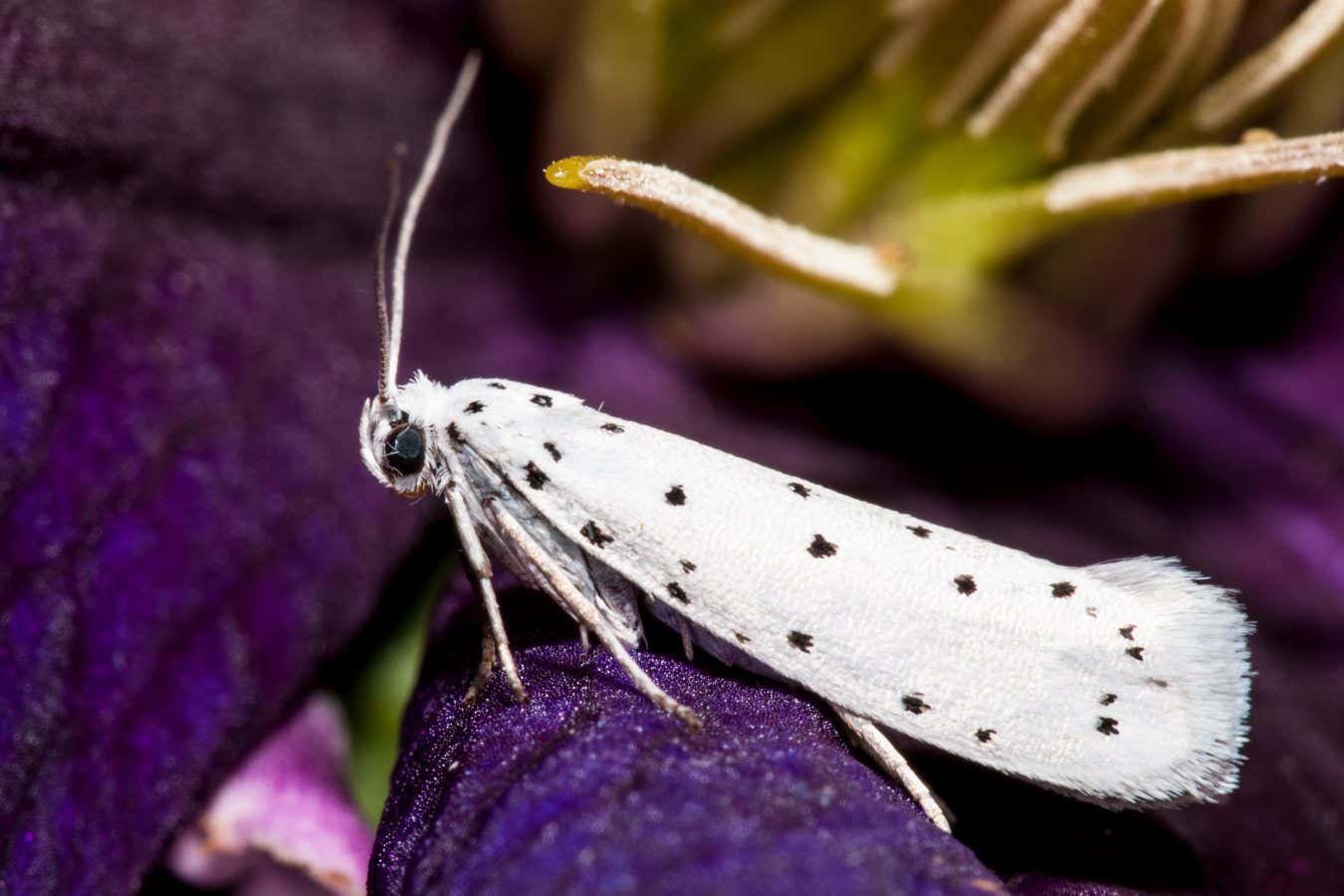
A spindle ermine moth perched on a flower
DP Wildlife Invertebrates / Alamy
Moths trying to survive in bright cities may have evolved smaller wings to limit how much they are drawn in by the light.
Artificial light shining at night disrupts the lives of many insect species, diverting them from their habitats and mates, and exposing them to predators. Ecological changes due to light pollution may also have produced evolutionary changes, but clear examples have been hard to come by.
In search of such a change, Evert Van de Schoot at the Catholic University of Louvain in Belgium and his colleagues analysed the wing and body size of 680 spindle ermine moths (Yponomeuta cagnagella). These moths were preserved from a previous experiment testing their responses to light.
In that experiment, researchers collected moth larvae from bright urban settings and dark rural places in France and Switzerland, then raised the moths together in the same garden. In a “flight-to-light” test, 30 per cent fewer urban moths were captured in a light trap compared with rural moths, suggesting they had developed a weaker response to light.
Van de Schoot and his colleagues may now have found an explanation for this. After taking careful measurements of the insects’ bodies, they found that the moths from urban settings had slightly smaller wings on average than the moths from rural areas. Among both the urban and rural populations, this smaller wing size was correlated with a weaker response in the light trap experiment.
“What is really striking is just the difference in the populations of rural and urban moths despite small changes in the wing,” says Samuel Fabian at Imperial College London. He says the study’s focus on flight mechanics adds another dimension to how we think about the impacts of light on insects. “Nature isn’t static,” he says. “Nature does adapt to us.”
Having smaller wings may limit how far and fast these moths disperse to find mates or food. But that trade-off might be a beneficial adaptation in urban ecosystems if it makes the moths less susceptible to the negative effects of responding strongly to light, says Van de Schoot.
The researchers say they can’t rule out whether the change is caused by some other difference between urban and rural settings, such as more fragmented habitat. Changes in eyesight may also have contributed to urban moths’ lowered response to light. And other insect species might be affected in different ways.
But if widespread, such changes in mobility could disconnect insect populations from one another as well as from the plants they pollinate, says Van de Schoot. “That could be important for the ecosystem as a whole.”
Topics:

